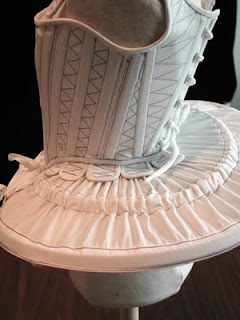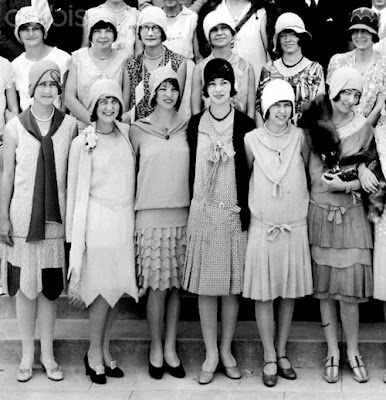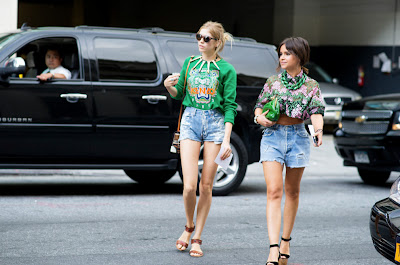 |
| Good Queen Bess when she was FINALLY old enough to stop wearing her red-haired wigs. |
In 1600 Elizabeth was still queen though she was pretty old. She died in 1603. I could talk about her all day but I'm really trying not to. Instead you can read a neat article about her influence on fashion:
http://www.elizabethancostume.net/influence.html
Another cool thing to think about is the development of second hand clothing stores. People living in London didn't have sheep to shear for wool or the room to keep their own looms so everyone bought their clothing. Here is a really nice little article about that:
http://www.extremecostuming.com/articles/secondhandclothes.html
Another change was the evolution of the French Farthingale, or bum roll
 |
| this |
into the wheel farthingale.
 |
| From this |
 |
| to this. |
 |
| Tutu! |
 |
| Tutus for everyone! |
This is a better reason than the one I made up while working in ballet. I always joked that tutus were so large and disk-shaped in order to discourage the dancers in performance from absent-mindedly doing this:
If you've ever spent a substantial amount of time leaping and bending while wearing a leotard, that particular maneuver will not be unknown to you.
Anyway, if you want to look at tutus, here's a bunch of photos.
Right. Now back to the wheel farthingale. The Elizabethian era marks the beginning of the arms race that is fashion. And when it came to farthingales or ruffs, the mantra became "Anything you can do, I can do bigger!"
 |
| Big |
 |
| Bigger |
 |
| Biggest! |
 |
| Fluffy |
 |
| Fluffier |
 |
| Fluffiest! |
 |
| This lady was Queen Elizabeth's first/best/most favored lady in waiting. Count the brooches in her hair, on her ruff, and on her dress and write it down. It will be on the test. |
http://www.covenanter.org/Attire/perkinsapparel.htm
Some of what William Perkins says there is fine but he keeps throwing in the idea Fourthly, it (clothing) must be answerable to our estate and dignity, for distinction of order and degree in the societies of men. This use of attire stands by the very ordinance of God; who, as he hath not sorted all men to all places, so he will have men to fit themselves and their attire, to the quality of their proper places, to put a difference between themselves and others.
By this logic, kings, nobility, and upper-class merchants are doing exactly what God wants them to do - make sure everyone knows that they are better than everyone else.
 |
| "Really?" |
Yeah.... Basically, the Puritan ethos was of simplicity and comeliness but that didn't mean they wore black all the time (black dye is really expensive) or that they didn't wear patterns or embroidery. They wore a lot of the same stuff everyone else did, they just didn't cover themselves with pearls and gold trim. All of this is fine. Humans have been human throughout history and even today we make a lot of unfortunate fashion decisions based on competetion.
So, what were the men wearing? Well, here is a painting of Sir Walter Raleigh and his son from 1602.
Here Sir Walter is wearing a white doublet, a ruff, a gold embroidered jerkin, paned trunk hose, stockings, and cannions, which are basically knee wraps bewween the end of his pants and the beginning of his socks. His son is wearing pants which are called "loose slops" and a folded collar which is THE up and coming fashion. This distinction between old school and new in a very obvious generational presentation is why I love this painting. We are approching an era known as the Cavalier or the Baroque which I like. Probably because the stupid fake codpiece has finally fallen out of fashion.
But, more on Cavalier next week. To finish up this week I want to talk about waistlines. With a little thought one can tell what era a lady's dress is from simply by where her waist is. But, to be able to track this, you have to actually know what a waist is. Here's a chart.
The waist is the narrowest part of the body between the bottom of the rib cage and the top of the hip bone. This is termed the "natural waist" and it never moves. The waistline in clothing, however, fluxuates quite a bit between the ribcage and the hip and is determined by what is in fashion. A clear example of this is the Empire style of the 1800's
where the "waistline" is right under the bust and the Flapper syle of the 1920's
where the "waistline" is somewhere around the hips.
I mention this because I hope you will start noticing the waistlines as we move on and begin to create a mental catalogue of where they are in each era. Then, when you see a painting or photo from any era, you will be able to know when it was made just by where the dress sits on the body.
Quiz time!






























